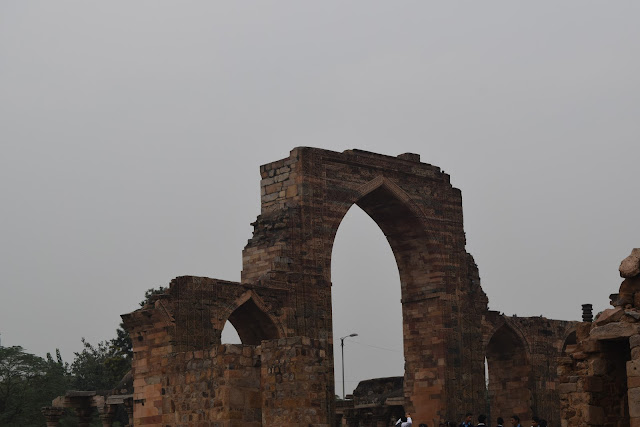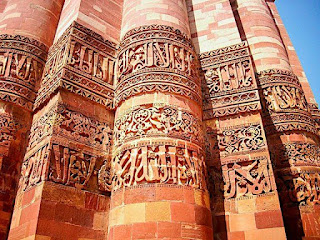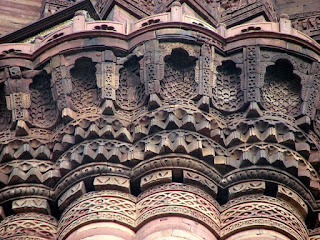Qutub Minar
 Qutub Minar or Qutb Minar, a 73 m (240 ft.) high tower made of red sandstone and
marble is not only the highest brick minaret in the world but also one of the
most famous historical landmarks of India. The construction of this tower of
victory was started by the founder of the Mamluk Dynasty in Delhi, Qutb
ud-Din Aibak and completed by his successor and son-in-law Iltutmish.
Located in the heart of Delhi, India, this UNESCO World Heritage Site, visible
from different parts of the city attracts thousands of visitors every day. It
is one of the most popular tourist spots in India and a must visit tourist spot
in the itinerary of first time visitors to Delhi, both national and
international.
Qutub Minar or Qutb Minar, a 73 m (240 ft.) high tower made of red sandstone and
marble is not only the highest brick minaret in the world but also one of the
most famous historical landmarks of India. The construction of this tower of
victory was started by the founder of the Mamluk Dynasty in Delhi, Qutb
ud-Din Aibak and completed by his successor and son-in-law Iltutmish.
Located in the heart of Delhi, India, this UNESCO World Heritage Site, visible
from different parts of the city attracts thousands of visitors every day. It
is one of the most popular tourist spots in India and a must visit tourist spot
in the itinerary of first time visitors to Delhi, both national and
international.
Height
of this Minar is 72.5 meters, its diameter is 14.3 meters
and its upper diameter is around 2.7 meters. There are 379
steps in this Minar from bottom to top. Near to this Minar and at the
view of this tower there are some verses or Aayaats inscribed over the walls of Qutub Minar. Besides this, there is also certain word in Kupee language, which means that this tower was established to reflect
the shadow of the God in both east and west direction. This Minar not only
famous for its architecture but also famous for the messages of the God, which it has reflect all over the world. In
order to celebrate advent of Muslim dominance in Delhi and in the
celebration of victory of Aibak over Rajput rulers, Qutab Minar's constructed. It was started to construct in 1199
and proved the excellent sample for Islamic architecture. It was known for
the minaret. Every tourist must visit this place in Delhi since it represents
an excellent example of Indo-Islamic architecture. This architecture
was started in 1199, taken around twenty years to complete and then established
itself as the greatest historical building in 1219. It
is the great example of Mughal's architecture.




Informative
ReplyDelete